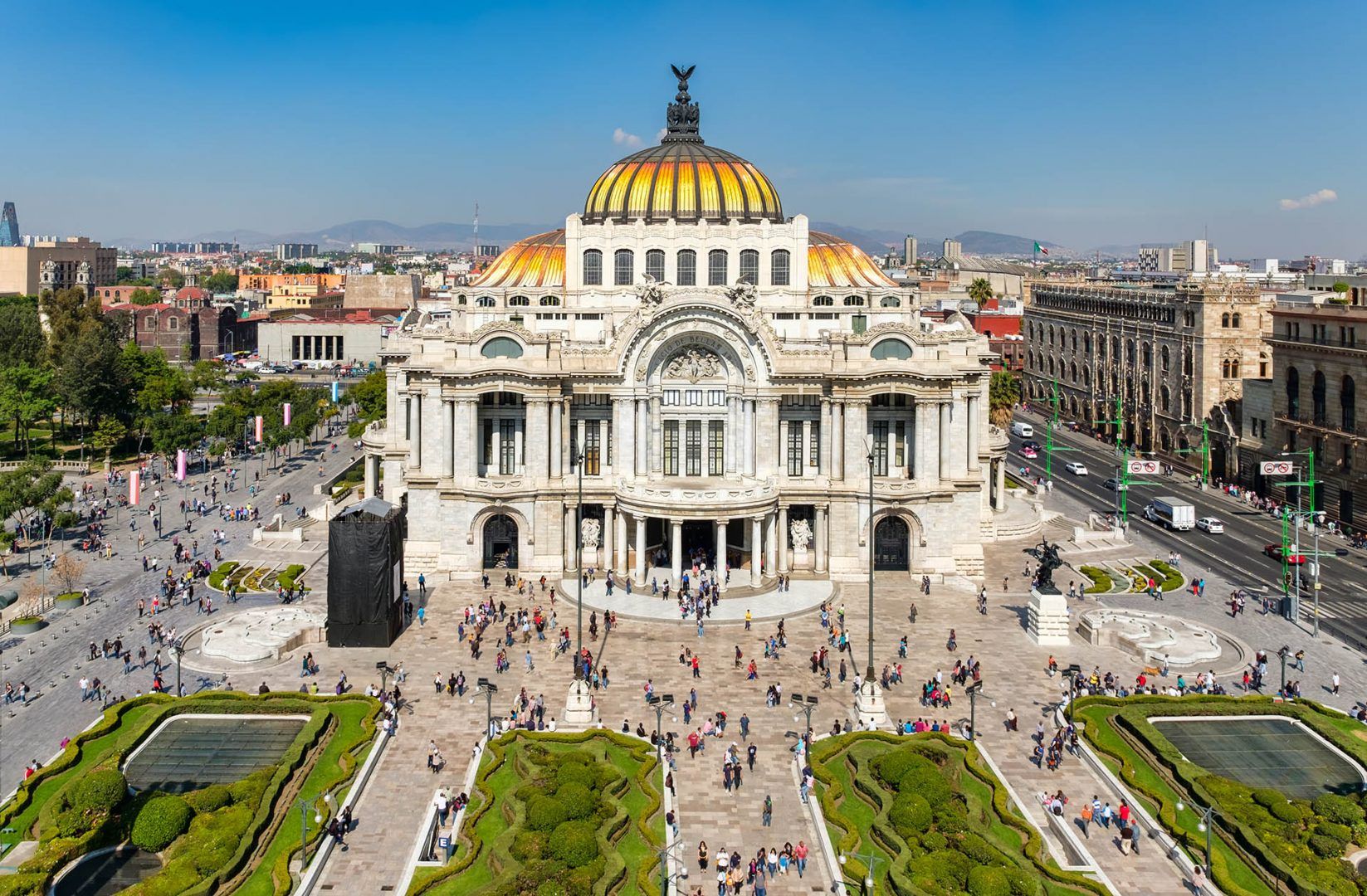2 days in Mexico City
Only have two days? Don’t worry—you can still get a great sense of the city. Stick to the essentials, hit a few key spots, and you’ll leave with a solid feel for the place.
Suggested itinerary
Here's how I would spend a couple days in Mexico City. If you are planning a longer, more extensive trip, be sure to see our Mexico City itineraries.
Day 1
Start your day in the Zócalo, the massive main square that’s been the heart of Mexico City since Aztec times. The Metropolitan Cathedral stands tall on one side—it's the oldest in Latin America, built directly over an Aztec temple. From there, make your way to the Templo Mayor ruins. This active archaeological site is where you can walk through the layers of the main Aztec temple. It's crazy to think that they're still uncovering treasures here, like gold and jade.
After that, head to the Palace of Fine Arts. The building itself is stunning, made of white marble, and inside you’ll find some of Mexico’s most important murals, including Diego Rivera’s famous works.
For lunch, stop by Casa de los Azulejos. The place is a beautiful 18th-century palace covered in blue tiles, and now it’s home to a Sanborns restaurant. Sit under the glass ceiling in the courtyard and enjoy a relaxed meal. Afterward, check out Mercado San Juan, a food market where chefs get their hands on unique ingredients like edible flowers and ancient herbs.
Wrap up your day at Plaza Garibaldi, where mariachi bands gather every evening. It’s a tradition that’s been alive since the 1920s.
Day 2
Start your second day in Polanco, a neighborhood known for its upscale shops and restaurants. Head straight to the National Museum of Anthropology, which houses some of the most important archaeological treasures in the country. Don’t miss the huge Aztec Sun Stone or the recreated Maya temples. The fountain in the courtyard is designed to look like a sacred tree from Maya mythology – it’s a cool detail you won’t want to miss.
Next, make your way to Chapultepec Park, which is twice the size of Central Park. The park is home to Chapultepec Castle, the only royal palace in North America. It’s had quite a history – it was once home to Emperor Maximilian I, and today, you can enjoy amazing views of the city and surrounding volcanoes from the roof terrace.
Finish your day in Roma Norte, a neighborhood known for its restored Art Nouveau mansions. For dinner, try Contramar – it’s one of the best places for seafood in the city. Their grilled fish is a must, served with red adobo on one side and parsley sauce on the other. For something a little different, Máximo Bistrot is an intimate spot where French techniques meet Mexican ingredients in an intimate converted pharmacy.






